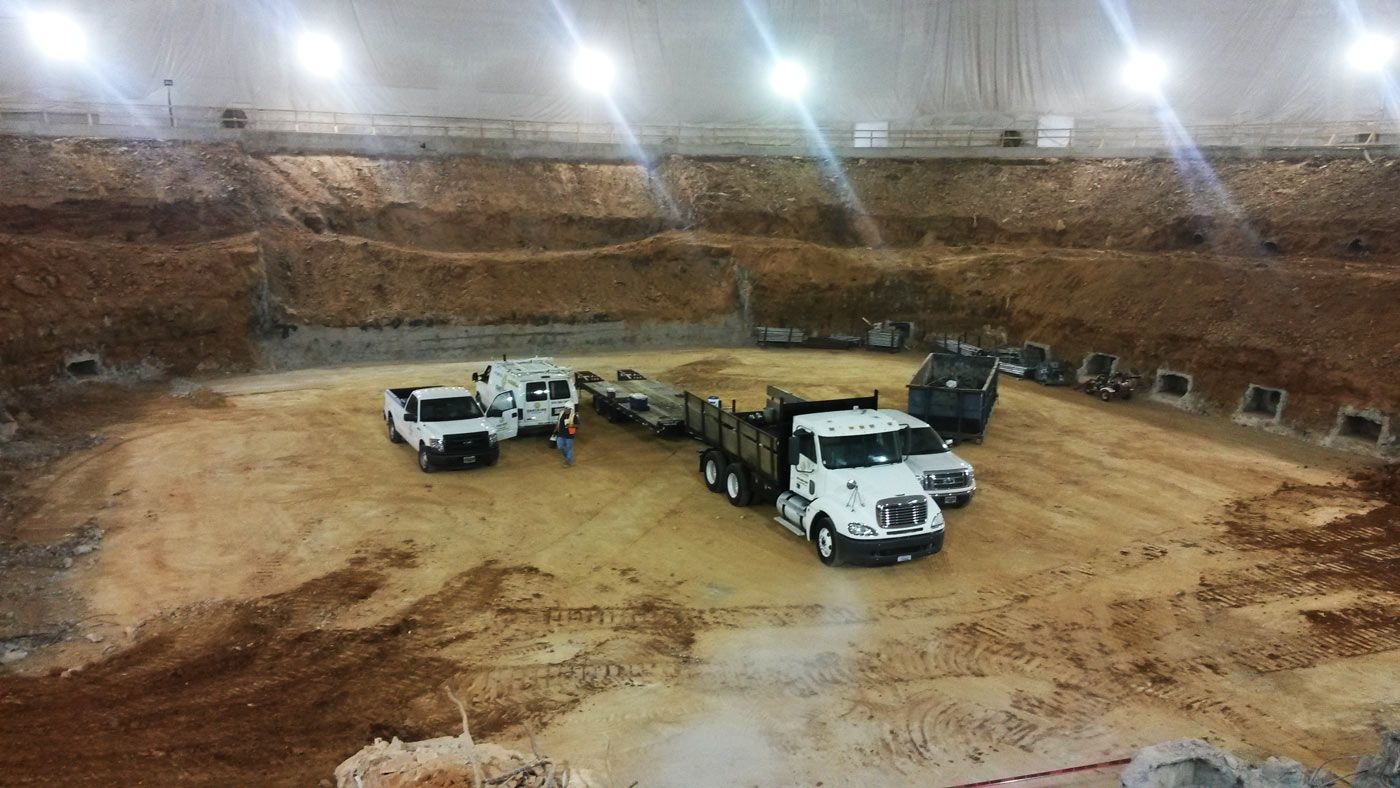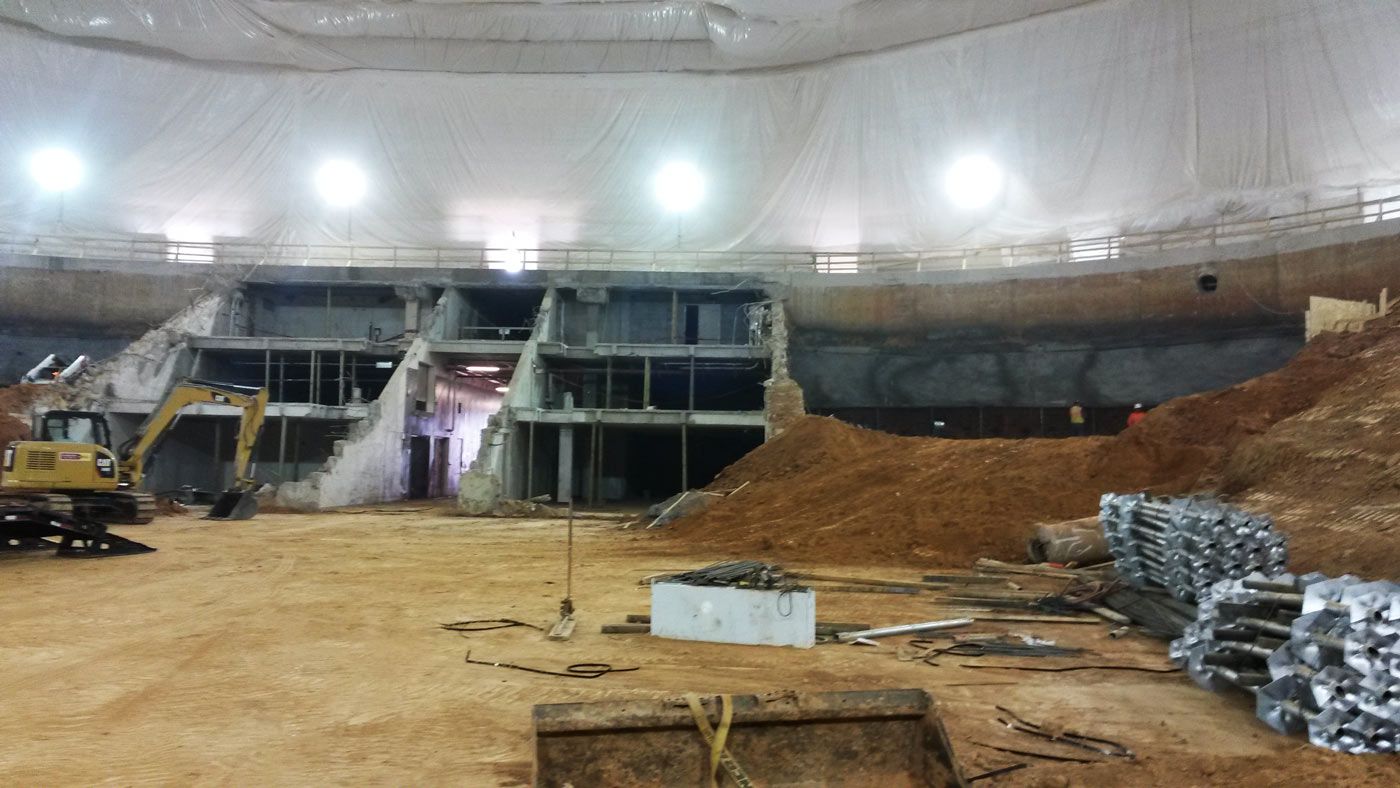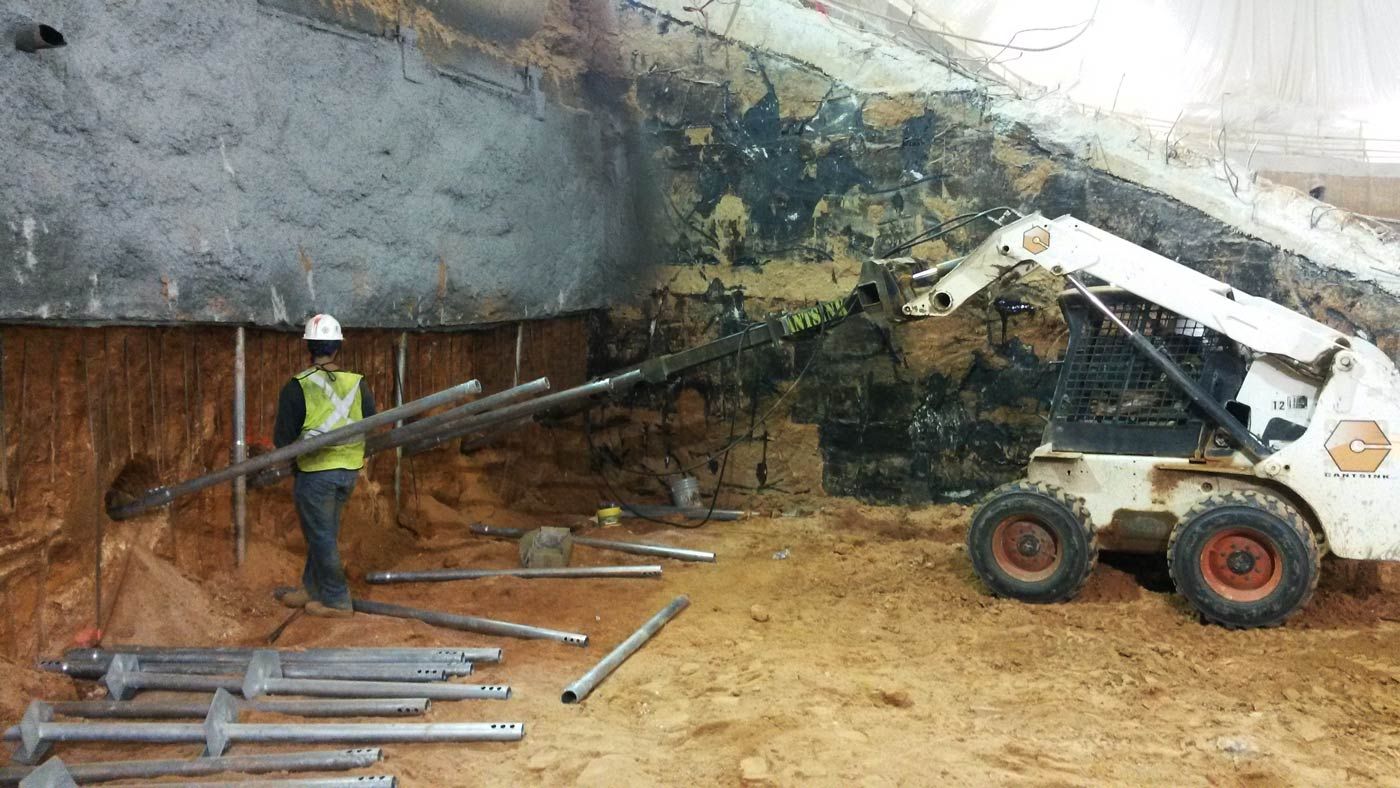
Case Study
Clemson University Littlejohn Coliseum
Situation
Plans for renovation of the university's iconic coliseum included adding rooms and exercise facilities underneath rebuilt fan seating for games. Named for the university's first business manager who oversaw much of the early campus construction in the 20th Century, this facility hosts more than 150 events per year. It houses a diverse range of annual activities including men's and women's basketball, graduations, concerts and job fairs. To accomplish the coliseum's extensive renovation, the project's engineers, Thornton Thomasetti and LS3P, specified the need for temporary earth retention. Cantsink helical piers and anchors are ideal for this type of application. In this case, Cantsink offered more than its extensive experience and a superior methodology to accomplish the needed shoring work. Cantsink also created a permanently stabilized earth retention wall ensuring long-term structural integrity for the renovated areas. Not only did Cantsink's engineer-driven stability plan and superior product quality facilitate the renovation project goals, they did it for more than significantly less cost than any other method.
Scope of Work
Cantsink's shoring work supports about 30 percent of the renovated coliseum. With the concrete stands built directly on soil, a one-to-one ramp ran from the base of the tunnel 22 feet above the court floor. Cantsink engineers designed a top-down wall system, starting with underpinning piles to stabilize the concrete tunnel in the affected areas of that wall system. The helical piles used for underpinning were installed to a minimum depth of 30 feet below ground. This support provided reinforcement to protect the concrete tunnel that would be compromised by the planned excavation under the base of the critical structure. With the underpinning in place, excavation could then begin in lifts at a maximum depth of five feet to allow for installation of helical tie-back anchors and shotcrete wall reinforcement. The wall design comprised anchor rows placed five feet vertically and four feet on center horizontally. Tension load capacities ranged from 15 Kips to 20 Kips.
Anchor System
The job required more than 400 anchors to secure three separate wall segments. Soil conditions in the anchor sites were found to be poor, which required anchor lengths greater than initially anticipated. The project's engineer of record, Thornton Tomasetti, allowed proof testing on two anchors in each row to ensure support for specified load capacities. The helical tie-back anchors also enabled proof testing immediately following installation, making them ideal for this project. In addition, the load achieved could be cross-referenced with torque levels to indicate compliance with design requirements.
Results
In just over two months, Cantsink completed the job at a cost more than $200,000 below earlier estimates, which were based on other methods. The support system now provides permanent stability for this landmark campus facility that will hold, celebrate, entertain, train and support Clemson students, employees, visitors, and fans for many years to come. But in a gesture of friendly competition, this Georgia-based company left a hidden mark somewhere in the shotcrete wall for its neighboring-state university rival: the initials UGA.


